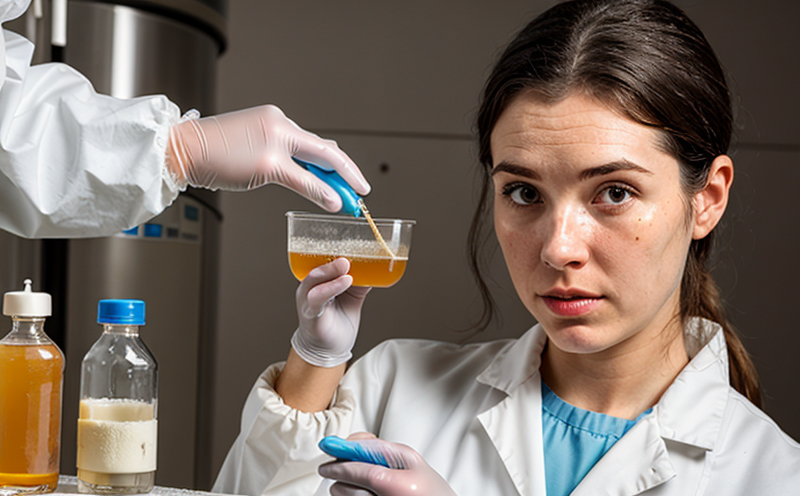WHO Guidelines Fungal Pathogen Detection in Pharmaceuticals
The World Health Organization (WHO) guidelines for fungal pathogen detection in pharmaceuticals are critical to ensuring the safety and efficacy of medicines. These stringent regulations aim to prevent contamination from fungi that could lead to severe adverse reactions or even life-threatening infections, especially in immunocompromised patients.
Fungal pathogens pose a significant risk during the manufacturing process of pharmaceutical products. Aspergillus species, Candida spp., Fusarium spp., and other opportunistic molds can contaminate raw materials, intermediate products, and final formulations. This contamination not only compromises product quality but also violates regulatory standards set by organizations like WHO.
The detection methods outlined in the WHO guidelines are designed to ensure that pharmaceutical manufacturers adhere to these stringent requirements. These tests involve a series of steps including sample collection, identification techniques, and validation procedures. The process begins with proper sampling protocols to minimize contamination risks during the extraction stage. Following collection, specimens undergo microscopic examination and culture-based methods to identify potential fungal contaminants.
Microscopy plays an essential role in this process by providing immediate visual confirmation of fungal structures under a microscope. However, it alone may not suffice due to its limitations in species identification accuracy. Therefore, advanced molecular biology tools like PCR (Polymerase Chain Reaction) and mass spectrometry are increasingly being employed for more precise identifications.
The WHO guidelines emphasize the importance of employing validated methods that comply with international standards such as ISO 14698-2:2017. Compliance ensures consistency across laboratories worldwide, enhancing reliability and traceability throughout the supply chain. Additionally, these internationally recognized protocols help maintain high quality while reducing false negatives or positives which could otherwise compromise patient safety.
Understanding the significance of adhering to WHO guidelines is crucial for quality managers, compliance officers, R&D engineers, and procurement teams responsible for ensuring product integrity within pharmaceutical manufacturing facilities. By implementing these stringent measures early in development phases, manufacturers can mitigate risks associated with fungal contamination effectively.
In summary, complying with WHO guidelines for detecting fungal pathogens in pharmaceuticals involves rigorous sampling procedures followed by accurate identification techniques supported by robust validation processes. This approach ensures that only safe and effective medications reach the market, protecting public health interests globally.
Why It Matters
The importance of detecting fungal pathogens in pharmaceuticals cannot be overstated. Fungal contamination not only affects product quality but also violates regulations set by organizations like WHO. Ensuring compliance with these guidelines is vital for maintaining public trust and ensuring that only safe and effective medications reach the market.
- Prevents contamination from fungi leading to severe adverse reactions or life-threatening infections
- Maintains product quality by adhering to stringent testing methods
- Protects public health interests globally through rigorous sampling procedures
- Ensures consistency across laboratories worldwide, enhancing reliability and traceability throughout the supply chain
The significance of this detection cannot be understated. It underscores the need for thorough testing methods supported by robust validation processes to ensure that only safe and effective medications are available to the public.
Benefits
- Reduces the risk of contamination from fungal pathogens, thereby enhancing product safety
- Ensures compliance with international standards, maintaining high-quality products
- Supports reliable and traceable supply chains through consistent testing procedures
- Promotes public trust by adhering to stringent regulatory requirements
- Mitigates potential legal and reputational risks associated with non-compliance
- Aids in early identification of issues, allowing for timely corrective actions
Implementing WHO guidelines not only benefits manufacturers but also contributes significantly to patient safety. By adhering to these stringent measures, pharmaceutical companies can ensure that their products meet the highest standards of quality and efficacy.
Why Choose This Test
- Adherence to international standards ensures consistent results across different laboratories
- Precise identification methods help minimize false negatives or positives, maintaining product integrity
- Comprehensive validation processes enhance reliability and traceability in the supply chain
- Supports regulatory compliance, reducing potential legal and reputational risks
- Early detection allows for timely corrective actions to prevent further contamination
- Certification from accredited laboratories adds credibility and trustworthiness to your product offerings
Selecting this test ensures not only compliance with WHO guidelines but also contributes to the overall quality assurance efforts of pharmaceutical manufacturers. It plays a crucial role in safeguarding public health by preventing fungal contamination.





